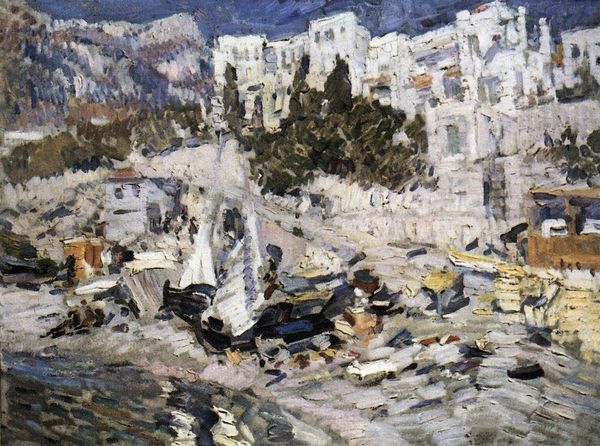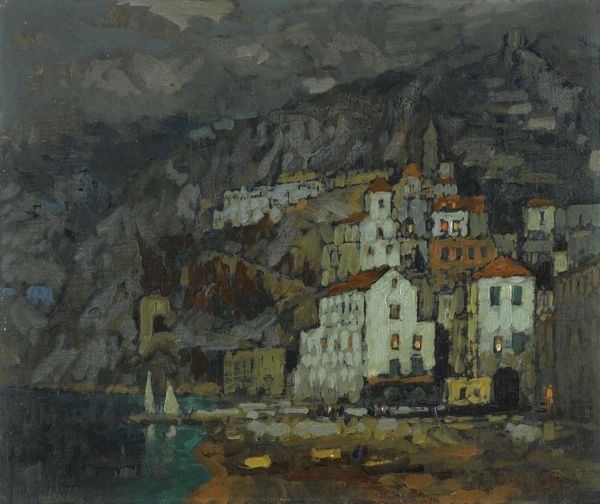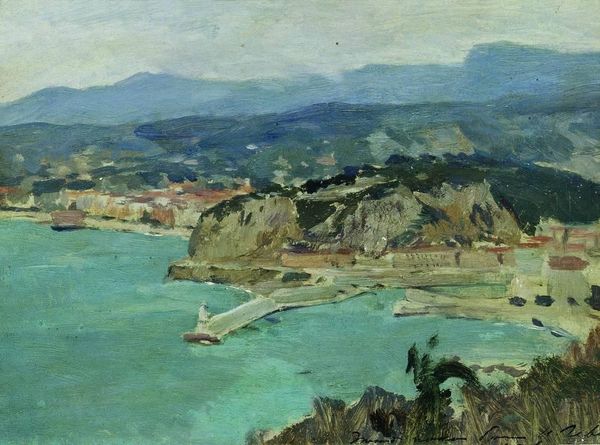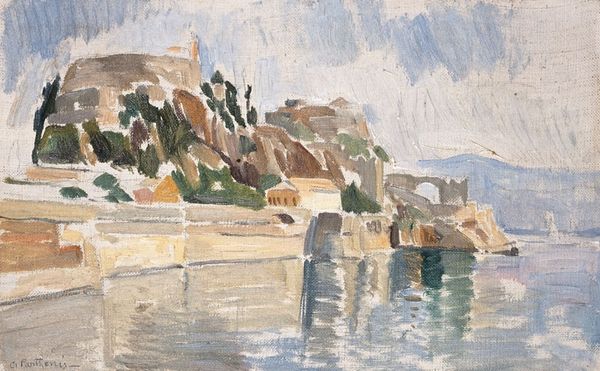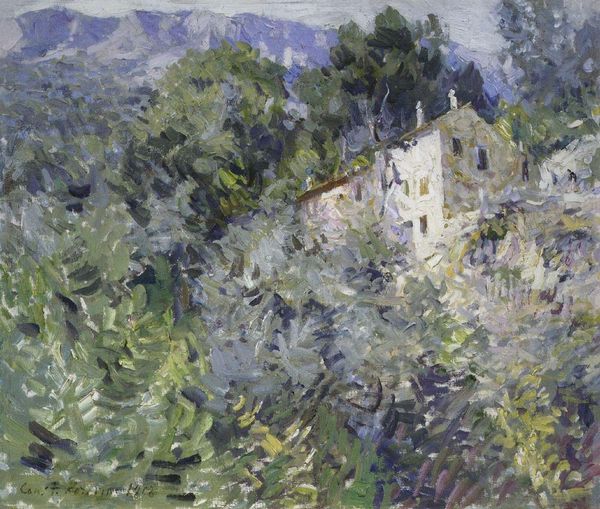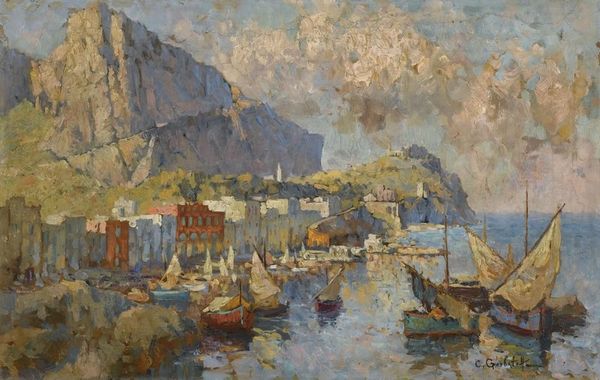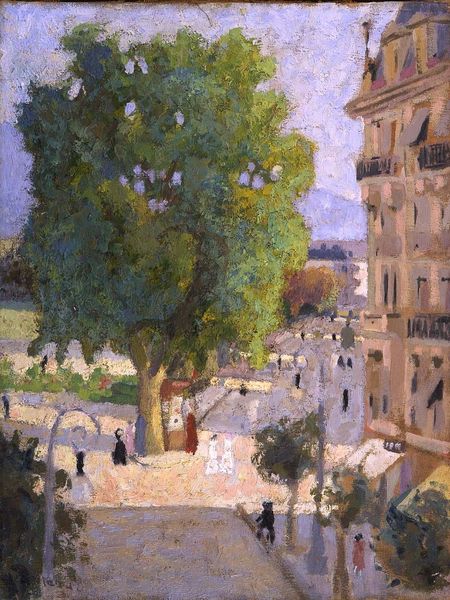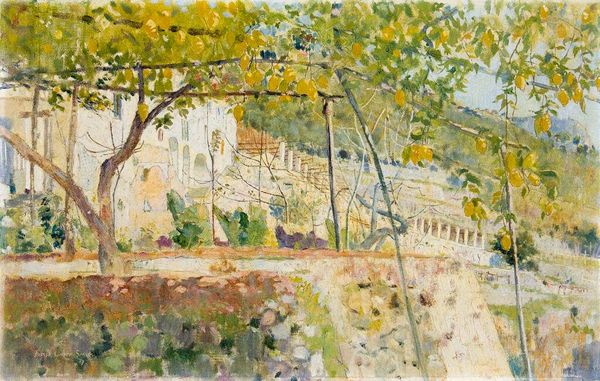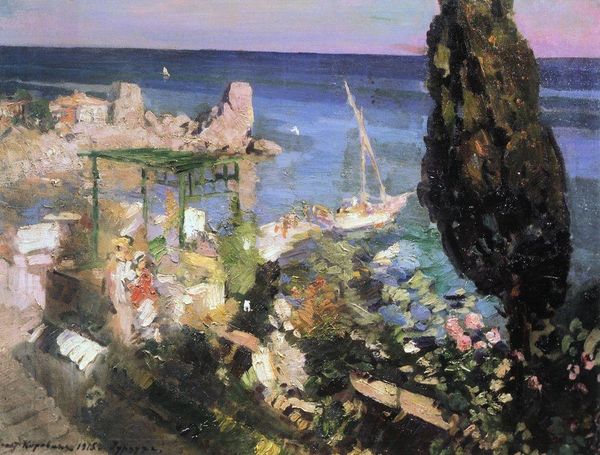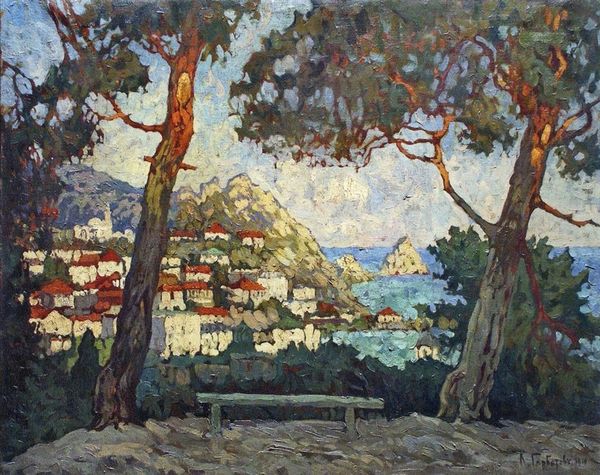
In the south 1906
0:00
0:00
konstantinalexeevichkorovin
Penza Regional Art Gallery (Savitsky Museum), Penza, Russia
Copyright: Public domain
Editor: This is "In the South," painted by Konstantin Korovin in 1906. It seems to be oil on canvas, capturing a coastal scene with energetic brushstrokes. I’m curious about how the impressionistic style might connect to the means of production in art. What's your perspective on this work? Curator: Korovin’s thick impasto and plein-air approach aren't merely stylistic choices, they are tied to the availability and distribution of materials during that period. Consider the shift towards mass-produced paints in tubes; how did this availability democratize art making, enabling artists to work directly from observation more readily? Editor: That’s interesting. So, instead of meticulously mixing pigments, the artist could focus more on capturing the fleeting moment and translating that into a tangible form using available resources? Curator: Precisely. And further, the very subject matter reflects a leisure class consuming the landscape. How might this scene—the boats, the villas—speak to a growing tourist industry enabled by advancements in transportation and disposable income, and to what extent do you consider it evidence of its industrial labor source? Editor: So, the artwork itself becomes a commodity reflecting the societal shifts of the time, both in its subject and its means of production. The very materiality reflects the consumer culture taking shape? Curator: Exactly. Even the artist's gesture becomes part of the commodity chain. It’s no longer just about skill but about the social and economic factors that enabled and influenced its creation. The value isn’t solely in the "beauty" but in understanding the full production line and where its benefits accrued to whom. Editor: That’s a totally new way to view impressionism! I was focused on the aesthetics but missed this important materialist interpretation. Thank you! Curator: Indeed. Thinking about art through a materialist lens reveals a deeper engagement with the social and economic fabric of its time.
Comments
No comments
Be the first to comment and join the conversation on the ultimate creative platform.
